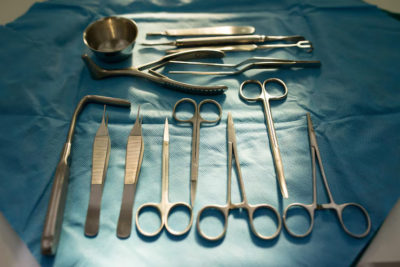Thanks to modern medical marvels we have more and more people living beyond 60 years. With this increased aging population total number of people bound to develop cataract is also increasing. According to the Global Burden of Disease, Injuries and Risk Factors Study, cataract has been topping the list of blindness causing disease and second in causing moderate and severe vision impairment.
Cataract surgery is the most-performed operation in patients over 60 years of age in India and rest of the world. Cataract surgery has been conducted since centuries. However, over the past fifty years, cataract surgery has considerably improved to provide better visual outcomes. From the procedure of removing natural crystalline lens to cataract extracting tools to advanced intraocular lenses (IOL), there has been a huge improvement at every stage in the eye care industry.
The surgical procedure for removing cataract was although successful extensively, it did not provide satisfactory visual results to the patients. At the time, intraocular lenses were not available to focus the image onto the retina. An IOL was created back in 1940 by Harold Ridley that was made up of long-lasting plastic that could be fixed inside the eye by replacing the natural lens. However, it had its own set of issues and did not become very popular. Since then IOL’s have gone through extensive rounds of innovation. Today we are privileged to have array of very advanced IOL’s and we can provide amazing visual results to patients after the cataract surgery so much so that cataract surgery is also considered as equivalent to a refractive surgery. Let us see what types of IOLs are available to us.
Monofocal Lens
Although, these were the “first” intraocular lenses that were made, however it is still used. In form, material and design these have undergone considerable innovation. As the name suggests, it gives improved vision of only one focal point i.e. distant, intermediate or near vision. So, based on your requirement of your lifestyle, patients can opt for monofocal lens.
People who regularly drive or watch TV, may opt for this standard lens adjusted for clear distance vision. More often than not, patients get these lenses adjusted for distance and prefer to wear glasses for intermediate and near activities.
Multifocal Lens
As the name of this type of lens is self-explanatory, it is understandable that it has more than one focal point of vision. These lenses provide better visual outcome whether that’s distance, intermediate, or near vision. These are now available in many different types and forms. Depending on the patient’s requirements, different types can be advised. Simple multifocal lenses, trifocal lenses, lenses with extended depth of focus, adjustable lenses etc are some of the options available in the market today. Each comes with its own set of advantages and disadvantages which need to be tailored to the patients needs and lifestyle.
Toric Lenses
Toric lens are beneficial to correct corneal astigmatism. These can monofoal toric or multfocal toric. The basic philosophy is that when there is significant astigmatism present on the cornea, it cannot be corrected by the simple monofocal or multifocal lens and requires a toric lens to remove the cylindrical component as well. So, after the initial assessment and lens power calculation, your eye doctor can guide you if you need a toric lens. As much as much as 20-30% patients can get benefitted by toric lenses.
If you are interested in exploring the variety of IOLs, please consult the best eye doctor nearby and undergo a thorough eye check-up to see if standard or premium lenses are suitable for your eyes in the long run.









